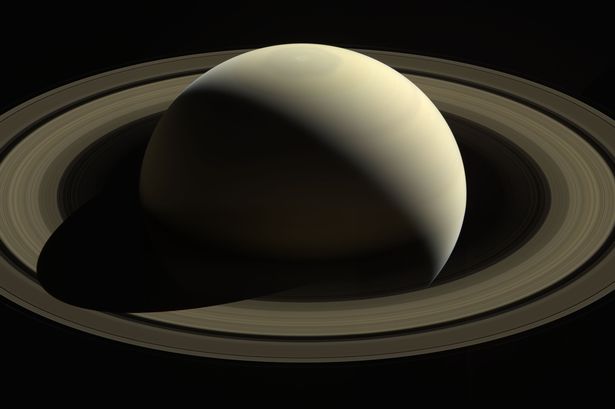Science
Saturn Dazzles in September: The Best Viewing Times for 2023

Saturn will be at its brightest this month, making September an ideal time for stargazers to observe the sixth planet from the Sun. The planet reaches opposition on September 21, 2023, allowing Earth to align with Saturn and the Sun. This celestial event means that Saturn will not only be closer to our planet but also shine brighter than at any other time of the year.
According to NASA, Saturn will be easily visible to the naked eye throughout September, particularly in the eastern evening sky and western early morning sky. For those equipped with a small telescope, the iconic rings of Saturn will be an impressive sight. NASA highlights that while other planets like Venus and Jupiter shine brightly in the eastern morning sky, Saturn’s brilliance will dominate the night.
Historical Context and Scientific Insights
The stunning rings of Saturn were first described in detail by Dutch astronomer Christiaan Huygens in 1655. Later, in 1980, NASA’s Voyager 1 spacecraft provided a closer look at Saturn, revealing thousands of delicate ringlets. Further research from the Cassini mission suggests that these rings formed approximately 200 million years ago.
Saturn’s appearance changes with its seasons, which are influenced by its axial tilt of 27 degrees. The planet’s colors are attributed to hydrocarbon hazes above ammonia crystals in its upper cloud layers. Currently, Saturn boasts 146 moons, with more awaiting official confirmation from the International Astronomical Union (IAU).
Understanding the nature of Saturn’s rings adds to the planet’s allure. These rings are believed to consist of fragments from comets, asteroids, or even shattered moons, torn apart by Saturn’s intense gravitational forces. They consist of billions of small ice and rock particles, often coated with dust and other materials.
Viewing Opportunities and Upcoming Events
The period of opposition offers some of the best opportunities to observe planets. During opposition, a planet appears larger and brighter, remaining above the horizon for much of the night. Opposition for Jupiter, Saturn, Uranus, and Neptune occurs nearly every year as Earth orbits faster than these outer planets.
In addition to Saturn’s display, there are other notable celestial events in September. NASA advises stargazers to look east just before sunrise on September 19, when a conjunction of celestial objects will be visible. This event will feature a crescent Moon positioned near both Venus and Regulus, one of the brightest stars in the night sky. The three will appear close together, creating a striking visual spectacle, even though they are far apart in space.
As Saturn continues its journey through the cosmos, this month presents a unique chance for enthusiasts and casual observers alike to witness the beauty of our solar system. With the right timing and location, the dazzling display of Saturn will be a highlight for many this September.
-

 Health3 months ago
Health3 months agoNeurologist Warns Excessive Use of Supplements Can Harm Brain
-

 Health3 months ago
Health3 months agoFiona Phillips’ Husband Shares Heartfelt Update on Her Alzheimer’s Journey
-

 Science1 month ago
Science1 month agoBrian Cox Addresses Claims of Alien Probe in 3I/ATLAS Discovery
-

 Science1 month ago
Science1 month agoNASA Investigates Unusual Comet 3I/ATLAS; New Findings Emerge
-

 Science1 month ago
Science1 month agoScientists Examine 3I/ATLAS: Alien Artifact or Cosmic Oddity?
-

 Science1 month ago
Science1 month agoNASA Investigates Speedy Object 3I/ATLAS, Sparking Speculation
-

 Entertainment5 months ago
Entertainment5 months agoKerry Katona Discusses Future Baby Plans and Brian McFadden’s Wedding
-

 Entertainment4 months ago
Entertainment4 months agoEmmerdale Faces Tension as Dylan and April’s Lives Hang in the Balance
-

 World3 months ago
World3 months agoCole Palmer’s Cryptic Message to Kobbie Mainoo Following Loan Talks
-

 Science1 month ago
Science1 month agoNASA Scientists Explore Origins of 3I/ATLAS, a Fast-Moving Visitor
-

 Entertainment2 months ago
Entertainment2 months agoLewis Cope Addresses Accusations of Dance Training Advantage
-

 Entertainment3 months ago
Entertainment3 months agoMajor Cast Changes at Coronation Street: Exits and Returns in 2025









